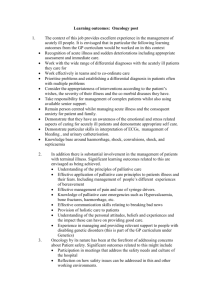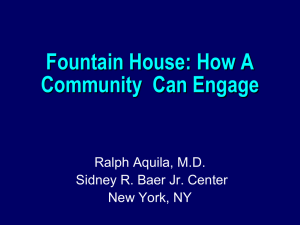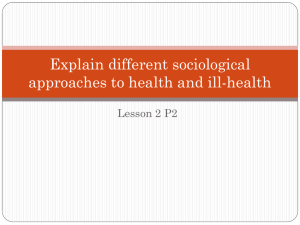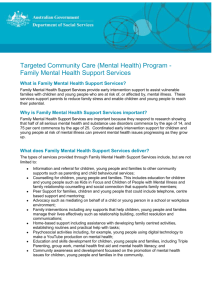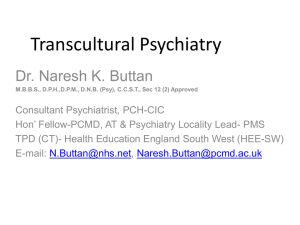Vulnerable Populations: The Mentally Ill
advertisement
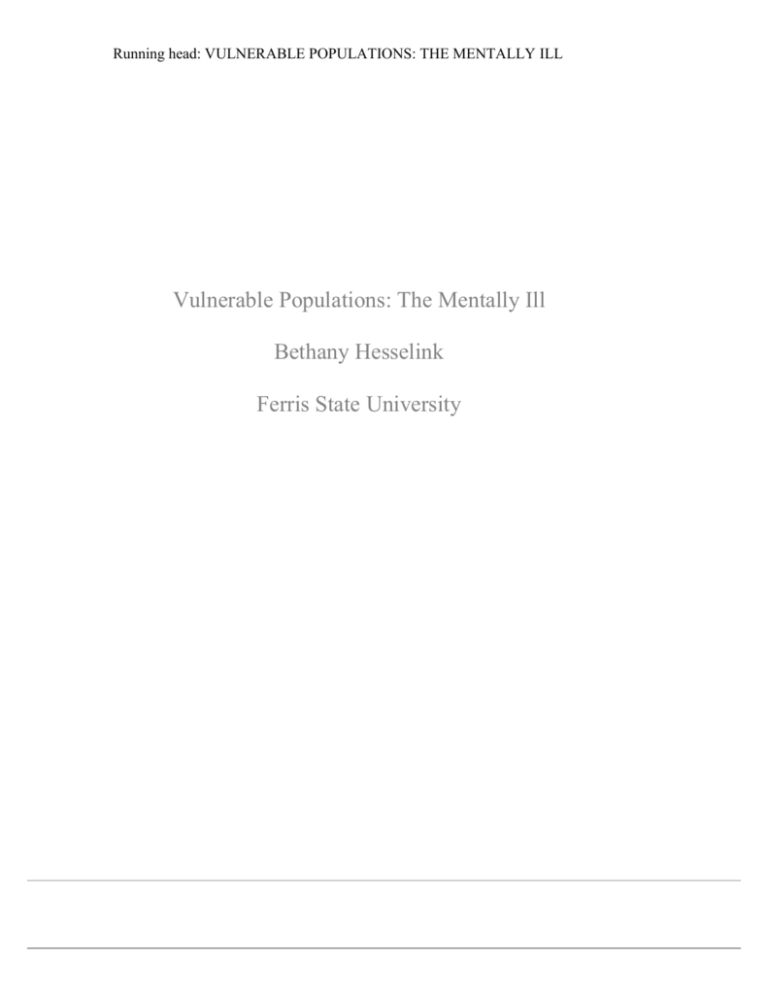
Running head: VULNERABLE POPULATIONS: THE MENTALLY ILL Vulnerable Populations: The Mentally Ill Bethany Hesselink Ferris State University Vulnerable Populations: The Mentally Ill 2 Vulnerable Populations: The Mentally Ill A vulnerable population is a group of people who have similar characteristics and tend to be at risk for poor health outcomes (Harkness & DeMarco, 2012, p. 335). According to Harkness & DeMarco (2012), some of the shared characteristics include socioeconomic status, ethnicity, gender, health status, and education level (p.32). People with a mental illness are categorized as a vulnerable population, as Linden & Kavanagh (2012) state, “individuals with mental illness are at an increased risk of experiencing prejudice and discrimination” (p. 1359). Unfortunately people are afraid to disclose their mental illness and seek help because of negative beliefs by the general public and healthcare professionals (McConachie & Whitford, 2009, p. 868). People with Schizophrenia for instance are perceived as dangerous and violent and due to these perceptions are treated differently than “normal” people. These notions and beliefs have lead to unequal care and treatment and therefore would be classified as a vulnerable population (Linden & Kavanagh, 2012, p. 1359-60). They have a difficult time functioning in society, business are unwilling to employ the mentally ill due to the negative perceptions. Personal Beliefs My personal feelings toward the mentally ill would include fear, distrust, and I would also consider them to be unpredictable and non-compliant at times because of the possibility of psychosis. Another part of me feels sorry of them because I think they are forgotten by society and looked down upon. I think some people don’t understand the condition therefore they think it is all an act or that they can’t be helped. Research Vulnerable Populations: The Mentally Ill 3 Harris Interactive Inc. (2008) reveals that only about 24% of the general public are familiar with Schizophrenia, which means that 76% knows little to nothing about Schizophrenia. “More than 85% people in the general public recognize that Schizophrenia is an illness that requires proper medical attention” (p. 7-8). Rusch, EvansLacko, & Thronicroft (2012), examined the way the general public views and defines mental illnesses and in their discovery, about 66% to 50% strongly agreed that schizophrenia, bipolar disorder, or depression are all mental illnesses. However 25% believe that drug addiction, stress, or grief are mental illnesses (p.645). Linden & Kavanagh (2012) examined experienced and student nurses’ attitudes regarding people with schizophrenia and discovered that 70% of the participants believe that schizophrenics are unpredictable, where as 32% believe that they should not be allowed to move freely in society, and 92% would not willingly marry someone with schizophrenia (p. 1360). Rusch, Evans-Lacko, & Thronicroft (2012) conclude, “Whether members of the general public associate certain conditions with the label ‘mental illness’ shapes their actions and reactions, both to others with a mental illness and to a potential own mental illness” (p. 647). Reflection After doing some research, I am surprised how ignorant and uneducated the public seems to be regarding not only mental illnesses, but specifically schizophrenia. I don’t think my personal biases changed after doing research because no matter how much education I obtain on the specific mental illnesses, I will still be afraid of the possibility of psychosis. Vulnerable Populations: The Mentally Ill 4 I do think I need to empathize with those who have a mental illness and try to understand what they are going through and attempt to help instead of judge. Solutions to Improve Policy I think we need to educate the public about mental illness in hopes of reducing the negative connotation of mental illness and schizophrenia especially. Linden & Kavanagh (2012) mentions there are anti-stigma campaigns that are targeted toward the general public and media and that might help change the public awareness of mental illness (p. 1366). Rusch, Evans-Lacko, & Thronicroft (2012) also suggest that reducing some the stigmas associated with a psychiatric disorder may in turn eliminate the prejudice and discrimination that is associated with mental illness. Hopefully through this help people with mental illnesses feel more comfortably disclosing that information and seeking help (p. 650). Vulnerable Populations: The Mentally Ill Reference Harkness, G.A. & DeMarco, R.F. (2012). Community and public health nursing: Evidence for practice. Philadelphia, PA: Wolters Kluwer Lippincott Williams Harris Interactive Inc. (2008). Schizophrenia: Public attitudes, personal needs, research and data findings. National Alliance on Mental Illness. http://www.nami.org/Content/Microsites254/NAMI_TuscarawasCarroll_Co_/Home239/Resources132/SchizophreniaAwareness.pdf Linden, M., & Kavanagh, R. (2012). Attitudes of qualified vs. student mental health nurses towards an individual diagnosed with schizophrenia. Journal of Advanced Nursing. 68(6): 1359-1368. Doi:10.1111/j.1365-2468.2011.05848.x McConachie, S., & Whitford, H. (2009). Mental health nurses’ attitudes towards severe perinatal mental illness. Journal of Advanced Nursing. 65(4): 867-876. doi: 10.1111/j.1365-2648.2008.04952.x Rusch, N., Evans-Lacko, S., & Thornicroft, G. (2012). What is a mental illness? Public views and their effects on attitudes and disclosure. Australian & New Zealand Journal of Psychiatry. 46(7): 641-650. DOI: 10.1177/0004867412438873 5
